
Koksijde is a town and a municipality in Belgium. It is located on the North Sea coast in the southwest of the Flemish province of West Flanders.

Simon Bening was a Flemish miniaturist, generally regarded as the last major artist of the Netherlandish tradition.

Kruiningen is a village in the Dutch province of Zeeland. It is located in the municipality of Reimerswaal, about 5 km south of the village of Yerseke.

Absdale is a hamlet in the Dutch province of Zeeland. It is a part of the municipality of Hulst, and lies about 32 km southwest of Bergen op Zoom.
Hendrik Herregouts was a Flemish history and portrait painter and draughtsman with an international career spanning Italy, Germany and his native Flanders.
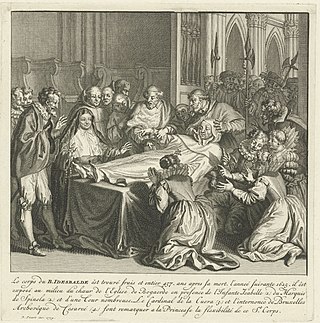
SaintIdesbald (Idesbaldus) was a Cistercian monk and abbot of Ten Duinen Abbey.

Artus Quellinus II or Artus Quellinus the Younger was a Flemish sculptor who played an important role in the evolution of Northern-European sculpture from High Baroque to Late Baroque.

Ter Doest Abbey was a Cistercian abbey in Belgium, in the present Lissewege, a district of Bruges, West Flanders.

Willem van Saeftinghe was a lay brother in the Cistercian abbey of Ter Doest in Lissewege, West Flanders, Belgium. He fought at the Battle of the Golden Spurs, and became a Flemish folk hero.

Male Castle, Bruges. A community of the Canonesses Regular of the Holy Sepulchre. It originated in Bruges in the 11th century, and between 1954 and 2013 was settled in Male Castle in Male, Sint-Kruis, Bruges, West Flanders, Belgium.
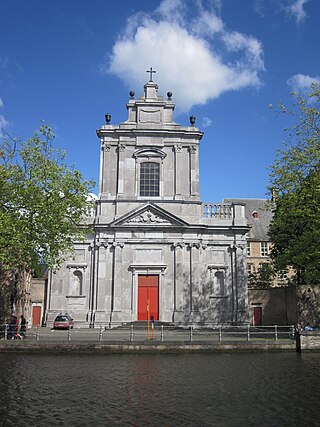
The Major Seminary in Bruges, in Dutch Grootseminarie, is a centre for training and formation in the Roman Catholic Diocese of Bruges, formerly used as the seminary for preparing candidates for the diocesan priesthood. It is located on the Potterierei in Bruges.

Ten Duinen Abbey or the Abbey of the Dunes was a Cistercian monastery at Koksijde in what is now Belgium. It was one of the richest and most influential religious institutions in the medieval County of Flanders. It later relocated from Koksijde to the city of Bruges.

Oosteeklo Abbey was a Cistercian nunnery founded in Oosteeklo in 1217 and later moved to Ghent.
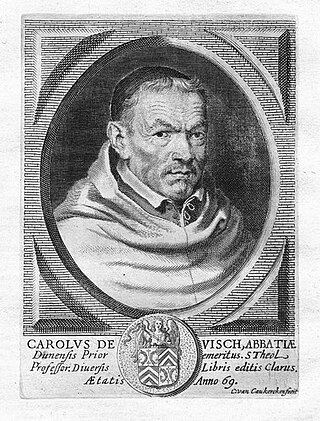
Carolus or Karel de Visch (1596–1666) was a Cistercian bibliographer, and prior of Ten Duinen Abbey.
Joanna de Hertoghe was an abbess of the Cistercian Oosteeklo Abbey in Ghent.
The Bruges Public Library is a public library in Bruges, Belgium.
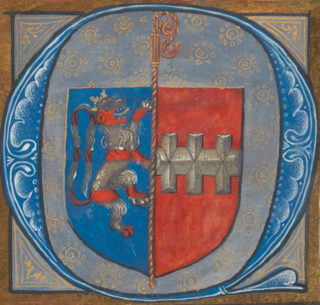
Raphael de Mercatellis, also known as Raphael of Burgundy, was a church official, imperial counsellor and bibliophile. He was the illegitimate son of Duke Philip the Good of Burgundy and a woman of Venetian origins, the wife of a merchant. He was born in Bruges. While pursuing a career within the Catholic church, and particularly after becoming abbot of Saint Bavo's Abbey in Ghent, he assembled a collection of lavish illuminated and decorated manuscripts. The library he created is of historical importance as the earliest library in the Low Countries containing a significant number of Renaissance humanist books. Sixty-five books from his library have been traced to collections worldwide, making it an unusually intact medieval book collection attributable to a single owner.
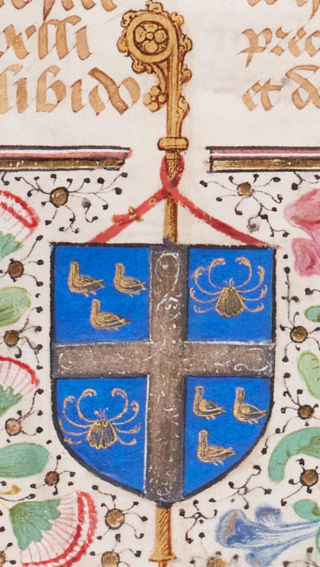
Johannes Crabbe was abbot of Ten Duinen Abbey in present-day Belgium, an imperial counsellor and bibliophile.















